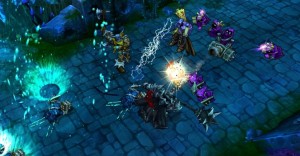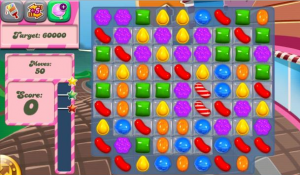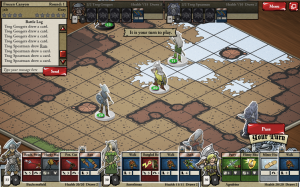A recent post on Gamasutra has certainly gotten a lot of attention; attempting to show the positive angle of the Free to Play market and design when it comes to mobile games . The post brought out a lot of interesting comments from both sides of the field and is one of those very sticky topics. I’ve had discussions with supporters and critics and it’s one of those topics that is really going to affect the scope of the market for the remainder of the decade.
Free to Play Basics:
Let’s get everybody on the same page before we talk about both sides. Free to Play design is obviously the development of a game that is released without any cost of entry. Instead, the profit model comes in by being designed around microtransactions while someone is playing. These transactions can be everything from new content, cosmetic options, ways to make progress and more.
The poster child of this model done right is League of Legends, who has grown to be one of the most profitable games and most popular in the Free to Play market. Having no cost of entry means anyone can quickly jump in and play the game, while the monetization aspect is meant to provide income to the developer.

League of Legends is one of the most popular Free to Play games, thanks to the amount of value someone can get without spending money
It’s important to understand the following: No matter how good or bad a Free to Play game is, if the title is not making money through its monetization, it’s going to crash for the developer.
Retention is both good and bad for these games as just because someone is playing, doesn’t mean they’re spending money. But if the game doesn’t keep the player invested, then the chance that’ll spend money is decreased.
Despite the popularity of League of Legends for hardcore gamers, or titles like Candy Crush Saga and Farmville for casual fans, a lot of people don’t like Free to Play design in any incarnation.
Insert Token to Continue
When talking to critics of Free to Play games, there are a few common points that are always mentioned. The big one is the use of monetization tactics in the same vein as casinos and gambling, with the purpose being to hook someone and get them to keep paying.
We’ve all heard the stories of people becoming hooked on Free to Play games like Farmville, Clash of Clans and so on, and how they spent hundreds of dollars on these games after becoming addicted. And it’s hard not to, as these titles were explicitly designed around psychological tricks to keep people invested.

Monetization in games like Candy Crush Saga are meant to speed up the game, remove hurdles and have their need increase the more invested someone gets at it
These same tricks have been a part of popular games: Achievements, simple accessible gameplay, progressively bigger walls that the player must get around to move forward.
However, the big point that critics bring up is that in normal games, these mechanics and systems are about providing value to the player and making sure that they get their money out of the game. In Free to Play games however, the use of these mechanics are there to keep someone playing with inflated content or interfere with the design in an attempt to get the consumer to spend money.
Both sides look at Free to Play games as an evolution of the arcade industry from back in the 80s-00s: Where people were spending a little money to get a few minutes of entertainment. But the problem with this was the arcade market crashed hard; primarily due to the increasing value of the home market and the gameplay becoming second to the monetization.
It wasn’t about providing someone with entertainment, but figuring out the best ways to take their money. We saw this with metric driven arcade games which were designed to maximize how much money it would take to actually beat them and to make each play as short as possible. Innovation and unique game design were downplayed in favor of the most popular/profitable.
As a quick aside, this kind of metric and quick game experience mentality found its way to the home platform for most the late 80s mid 90s. The change to deeper and higher quality games was one of the prime reasons for the arcade industry’s decline in popularity. With that said, let’s turn to the defense of this profit driven model.
Paying to Play:
In a recent post I made, I talked about video games as both products and art and what that means as a game developer trying to make a living. Free to Play games that wear their monetization mechanics on their sleeves are very much on the product side of video games.
These games are successful because the use of these mechanics work to keep someone invested in your game. The most successful Free to Play games on the market are those that make use of the same mechanics and allure of some of the most popular regular games, they’re just doing it with a focus on monetization.

Clash of Clans has become huge enough to have commercials and the clout needed to stay in the public eye; something that all Free to Play games want.
When the business model works, it can provide a game developer with a lot of income and the games that have taken off are huge.
But there are of course games where it doesn’t work and without the income from paying customers, we’ve seen Free to Play Games die so it’s not an always sure fire win.
But it’s time to get to the heart of the matter: Are Free to Play Games and/or their design evil?
My Thoughts:
First, we need to get off the word “evil,” as it just seems too comical for this kind of discussion. Mechanics despite what anyone says are not gender exclusive or tilted in either direction on a morality scale; it’s how they’re implemented by the developer that determines their use and what the consumer thinks of them.
As we’ve talked about, Free to Play games by their design are more on the “product” side of what a video game can be; and there’s nothing wrong with that. We see plenty of AAA titles that directly take mechanics from other games and built around providing an amazing product.
Great games are those that manage to find the balance between an art and a product so that they do give meaningful value to the consumer and the same goes for Free to Play games. Titles like Team Fortress, League of Legends, Path of Exile and more, do provide a lot of value from their base experience, without having to spend one cent.
Does spending money improve the experience? Of course, the more money you put into these games will provide more options and value. It’s the same with DLC packages we see in AAA games. The major point however is this: These games can be enjoyed without spending money.
And because of that, the people who decry anything F2P as “wrong” or again “evil” are a bit silly in my opinion. There are titles where the monetization does not control or tether the gameplay. Another point is that monetization doesn’t automatically mean “pay to win” and you can read more of my thoughts on that in the supplemental link at the bottom of this post.

Kim Kardashian’s Hollywood used every monetization tactic in the book, and was one of the most profitable games of last year
With that said, we now turn our attention to the mobile market and what’s considered the norm of Free to Play there.
While these mechanics are not evil, when they are used to limit someone from playing a game, control the gameplay or act as a money drain, THEY ARE EXPlOITIVE. The examples I just mentioned on the PC, are not a part of this discussion as we are now focusing squarely on the Mobile Market.
I know Mobile Game Developers are ready to comment with some of their examples of how these mechanics can be used positively to affect the consumer experience, but that’s not good enough. And while many developers decry the use of casino and gaming philosophies in these games, that’s not stopping developers from using them. The problem is that the market itself has become dominated by games built around the same metric driven gameplay as the arcade industry: Where it’s not about providing enjoyment, but figuring out the best ways to take the consumer’s money.
That is the preconception and majority perception of the Mobile Game Market by consumers and why many core gamers and developers look down on it. Again, any examples that you have about monetization mechanics used to make a game better are moot, because of one simple question.
Can you name me a mobile Free to Play game that without any use of exploitive monetization mechanics ( including energy, pay or wait, social requests, etc), has made as much money as either Farmville, Clash of Clans, Candy Crush Saga, Kim Kardashian’s Hollywood or Game of War? I can answer that for you, there isn’t.
Yes, there are great mobile games that provide value without using these tactics or using them in a way that’s not impacting the game experience. But, and it’s a big but, unless the popular market option shifts away from exploitive games and mechanics, then they will remain the exceptions and not the rule.
Sustaining the Market:
Providing value to your consumers while earning an income is the major goal of anyone in the Game Industry and where that balance between product and art comes in. A game that is so good that people feel compelled to give the developer money instead of paying for free is a very lofty goal. But using mechanics that explicitly push someone to pay without providing anything meaningful in return is simply exploitive.
But there is a bigger problem at work here, because these games are the popular majority and what people conceive as all Free to Play games, they’re poisoning the well in a manner of speaking. The reason why so many people are quick to call Free to Play games “evil” is because they only see the popular options like the ones mentioned above.

Games like Card Hunter were amazing without having to spend money to play, but people still lump all Free to Play games together due to the stigma attached
This has the impact of affecting games that are trying to do more with Free to Play design or simply releasing a mobile game.
It doesn’t matter if you’re not being exploitive when everyone around you is and overshadowing you. Again, this is why any small examples of good Mobile Free to Play Games are not good enough, when the market has this stigma attached to it.
Now comes the other big question: What does this mean for Mobile Development? The big name games like the ones mentioned above aren’t going anywhere; they are too firmly entrenched and their companies have the marketing clout to keep their awareness going. At this point, the major decision the Mobile Market will have to make, is whether they are going to strive for higher quality games or continue to push explotitive design? It remains to be seen just how long the market in its current form will last, but I’m sure all eyes are going to be on it for the remaining half of the decade.
Lastly, here are some supplemental posts and information I’ve done regarding the debate and implementation of Free to Play Mechanics:
- This is a post I made that specifically looks at Pay to Win and monetization tactics in the Free to Play Market
- Here is a podcast I had with The Binary Family’s Thorsten Rauser, who is very much a critic of monetization and exploitative tactics in the Mobile and Free to Play markets
- Finally, a podcast I had with my friend who works at Pocket Gems who had a far more positive opinion of the Mobile Market and probably leans towards the author of the original Gamasutra post mentioned


